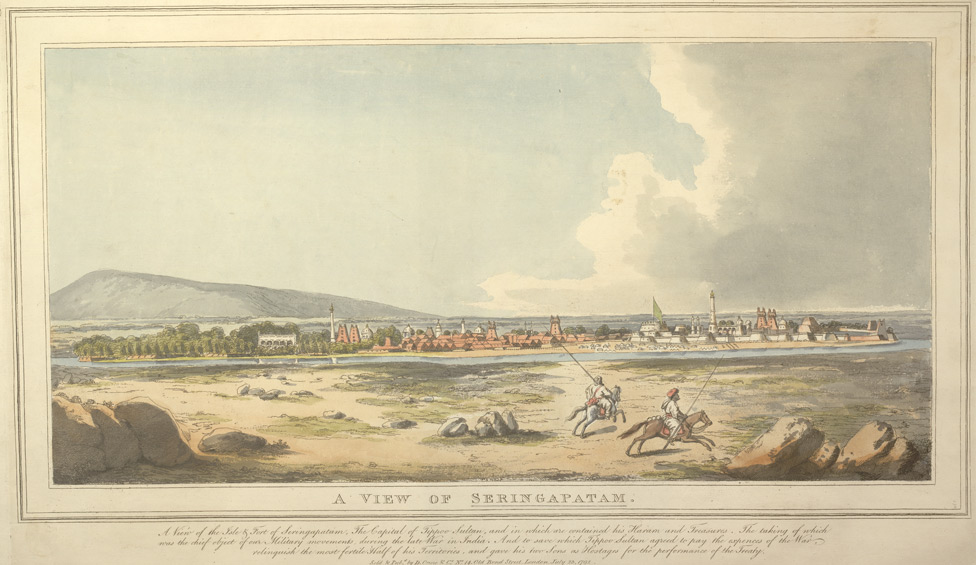Seringapatam (Srirangapatna)

(If the image doesn't load: http://www.columbia.edu/itc/mealac/pritchett/00routesdata/1700_1799/tipu...)
Srirangapatna, also known as Seringapatam after the spelling was changed during British rule, was the capital city of the kingdom of Mysore during the rule of Haidar Ali (1722 - 1782) and his son Tipu Sultan (1753 -1799). The city is an island surrounded on all sides by the river Cauvery, and on the western side, the main fortress is surrounded by double walls. Now, the fortress, and by extent, the city, is most well known for the British siege which ended the Fourth Anglo-Mysore War in 1799. Because of the fortifications, both natural and man-made, and the thirty thousand troops under the command of Tipu Sultan, the siege lasted a month, from April 5 to May 4, 1799. The purpose of the siege was to reinstate the Wodeyar dynasty to the throne of the Mysore kingdom, so that the British East India Company could retain indirect control over the area. As depicted in the Moonstone, the siege was successful after the British and allied forces breached the walls, stormed the fortress, and killed Tipu Sultan. Apart from the siege, Srirangapatna also holds religious significance, because of the various temples, including the Sri Ranganathaswamy Temple, from which the name of the city is derived. The temple is one of the Pancharanga Kshetram, a group of the five most sacred Hindu temples dedicated to Vishnu and is now the main tourist destination in Srirangapatna.
Nowadays, the location primarily serves as a religious, cultural, and historical landmark of what is described above and has been nominated to become a UNESCO World Heritage Site. The major locations from the siege, including the place the walls were breached and where Tipu Sultan died have been preserved and marked as tourist locations on the island. Their popularity for tourists has been increasing since 2002, and between 2010 and 2011 almost a million people visited the sites around Srirangapatna.
Works Cited
Britannica, The Editors of Encyclopaedia. "Shrirangapattana". Encyclopedia Britannica, 26 Aug. 2014, https://www.britannica.com/place/Shrirangapattana.
Government of Karnataka. Sri Ranganathaswamy Temple, Srirangpatna. Government of Karnataka, https://sriranganathaswamytemple.kar.nic.in/
Kumar , Krishna R.. Srirangapatna becomes a tourist hotspot. The Hindu, 1 May 2011, https://www.thehindu.com/life-and-style/leisure/srirangapatna-becomes-a-tourist-hotspot/article1981423.ece
Pritchett, Frances W.. Seringapatam. Columbia University, http://www.columbia.edu/itc/mealac/pritchett/00routesdata/1700_1799/tipusultan/seringapatam/seringapatam.html
Walsh, Robin. Seringapatam 1799: Introduction. Macquarie University, https://www.mq.edu.au/macquarie-archive/seringapatam/intro.html
Parent Map
Coordinates
Longitude: 76.682860400000
